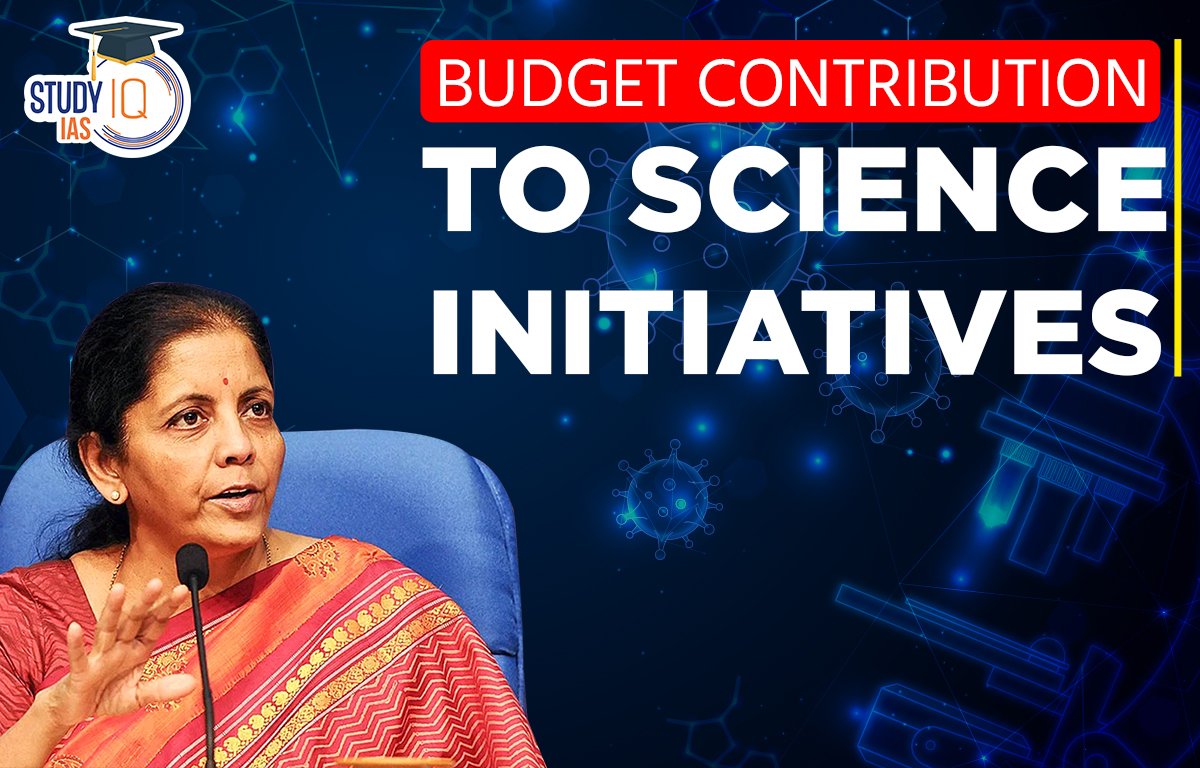Table of Contents
Context: Budget 2022-23 has allocated a total outlay of Rs 16,000 crores to the Ministry of Science & Technology and around 2,000 crores to the Department of Health Research, an increase of 15% and a decrease of 7%, respectively, from last year.
More on News
- The budget has focused on the crucial areas of energy security, food and nutrition security, health security, environment security, etc.
- CSIR has an active presence in all of the above areas through:
- Green hydrogen R&D under the National Hydrogen Mission
- Research in energy technologies, especially renewables &green energy, and battery energy storage.
- Boost high-value horticulture and enable India to become a ‘Global Millets Hub’
- Sickle Cell Anaemia Mission to eliminate the disease by 2047.
- Application of artificial intelligence [AI] in various sectors and focus on futuristic medical devices and technologies.
- New programme to promote research and innovation in pharmaceuticals.
- Waste-to-Wealth Mission to address environmental issues.
- Preservation of mangroves and wetlands, promoting natural farming, biomass, bio-manure and biogas, and scientific management of dry and wet waste, through programmes such as PM-PRANAM, MISHTI and Amrit Darohar.
India’s Science Expenditure
- The Centre spends 0.7 per cent of gross domestic product (GDP) on research and development.
- This is lower in comparison to China’s 2 per cent, Japan’s 3.4 per cent and the USA’s 2.7 per cent.
- The bulk of the hike of the Budget has gone to the Department of Science and Technology (DST).
- Very less has been allocated to the Department of Biotechnology, and Department of Scientific and Industrial Research (DSIR).
- The Deep Ocean mission and the National Research Foundation have got substantially higher hikes than in previous years, a sign that they are the Centre’s immediate focus.
- There has been an increased fund infusion to the National Research Foundation (NRF).
National Research Foundation (NRF)
- NRF is being envisaged as an autonomous and umbrella structure that will improve linkages between R&D, academia and industry.
- The total proposed outlay of the National Research Foundation is Rs 50,000 crore over a period of five years.
- Key Features
- National Research Foundation (NRF) will fund, coordinate, and promote research in the country.
- NRF will assimilate the research grants being given by various ministries independent of each other.
- NRF will ensure that the overall research ecosystem in the country is strengthened with a focus on identified thrust areas relevant to our national priorities and towards basic science without duplication of effort and expenditure.
- The funds available with all ministries will be integrated into NRF. This would be adequately supplemented with additional funds.
Other Major Takeaways
- Biotechnology: The principle of “Green Growth” mandates the biotechnology sector to play a major role in finding sustainable and recyclable solutions in almost all domains, including health, agriculture, and clean energy.
- The Department of Biotechnology is bringing out a BioE3 (Biotechnology for Economy, Environment and Employment) Policy for green, clean and prosperous India that will be enabled through “high-performance biomanufacturing”.
- New safe and effective vaccines for existing and emerging diseases will be developed.
- The Department will continue the development of sustainable aviation fuels, zero-waste biorefinery, biobased alternatives to single-use plastics and synthetic biology tools for carbon capture and utilisation for a clean environment.
- In the animal sector, the renewed focus would be given to the ‘One Health’ consortium established by the DBT to make us ready for future pandemics.
- The Indian Tuberculosis Genomic Surveillance consortium would be operationalised for the prediction of drug resistance & strain lineage to support the Government of India’s goal of ‘TB Mukt Bharat’.
- For mainstreaming of millets, a programme on the genomic characterisation of minor millets is being developed. Agri-based gene editing platform would be established for the fast-tracking of leads available in Indian institutions.
- The department will create one Apex autonomous body, Biotechnology Research and Innovation Council (BRIC), towards achieving “minimum government, maximum governance”.
- Biological Research Regulatory Approval Portal (BioRRAP) was launched by the DBT to strengthen inter-departmental synergies in the functioning of agencies regulating various aspects of biological research.
Challenges faced by Research & Development in India
- Less attention to Basic Research: Though the budget has laid emphasis on investing in ‘Artificial intelligence’ research, improving the technology to produce laboratory-made diamonds and a center for research in sickle cell anaemia, the budgetary allocation does not signify a significant scale-up of basic research.
- Low Allocation for Research and Development: Developed and technologically advanced countries spend over 2% of their GDP on Research and Development.
- The United States and China spend 3.45 per cent and 2.4 per cent, respectively. Korea spends 4.8 per cent of GDP in science and technology.
- India continues to hover around 0.7% despite being among the world’s largest producers of scientific literature.
- Limited Absorption Capacity of Scientific Institutions: While funds are a big challenge to research and development in India, the lack of significant raises across departments shows that the absorptive capacity of scientific institutions in the country is limited.
- Unnecessary delay: Research scholars not getting promised funds on time and the wait for the quality equipment required by researchers continues to be delayed.
- Lack of Interest in Research and Development: Less than 0.5 per cent of Indian students pursue a PhD or equivalent level of education, according to the AISHE report.
- Currently, the number of researchers (per lakh population) in the country is way behind China, US, as well as much smaller nations including Israel.


 Daily Quiz 11 July 2025
Daily Quiz 11 July 2025
 Operation Baam: Baloch Separatist Group ...
Operation Baam: Baloch Separatist Group ...
 Article 326 and Electoral Roll Revision ...
Article 326 and Electoral Roll Revision ...





















